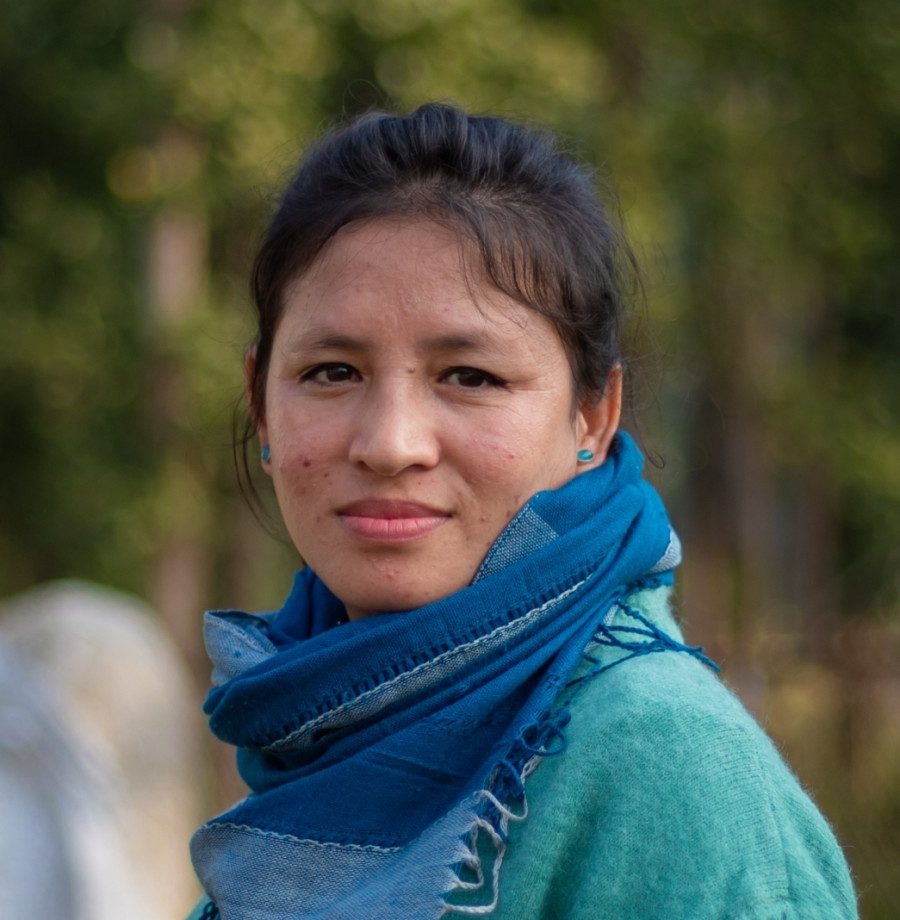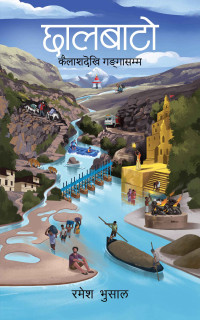Books
How literature inspires a visual artist
Muna Bhadel discusses the interplay between writing and painting in narrating stories and conveying emotions.
Sanskriti Pokharel
Muna Bhadel is a visual artist based in Kathmandu who has participated in numerous group and solo exhibitions, workshops, and residency programs in Nepal and abroad. Bhadel was the recipient of the Himalayan Art Award 2022.
She explains that literature and visual art are the branches of the same tree, as both convey messages, evoke emotions, and engage audiences.
In this conversation with the Post’s Sanskriti Pokharel, Bhadel explains how she draws artistic inspiration from literature and how its themes echo in her works.
Can you share what led you to the field of visual arts?
As an artist's daughter, I grew up seeing art from a close distance. My father often used to bring me drawing books, and the illustrations in them captivated me. After completing grade ten, I applied everything I observed during childhood by participating in various art competitions and programmes.
It wouldn't be wrong to call art my hobby, but I never considered it a career path. Becoming an artist was never my 'big dream.' Things simply happened over time, and I went along with them.
After SLC, my decision to 'go with the flow' led me to enrol at Lalit Kala Academy of Fine Arts. I struggled with some subjects during my school years because I had difficulty memorising information. However, art was different; I excelled and consistently did well in class. This realisation, along with my natural inclination for artistic expression, steered me toward the field of art.
In retrospect, I believe going with the flow of life and doing the right things at the right time ultimately led me to this fulfilling path. The journey was not planned but rather a series of events aligned with my inherent talent.
Your paintings often tell stories, particularly those of women’s experiences. Is there particular feminist literature that resonates with the themes you depict in your work?
From exploring the relationship between women and their colourful attires to depicting my grandmother's struggles and desires and the broader experiences of Nepali women, I have made women and the elements surrounding their lives the central theme of my artworks.
I have read BP Koirala's literary works in the past, and they resonate with the themes I depict in my work. Many of Koirala’s story collections highlight women's experiences, portraying their emotional depth, desires, and resilience. Koirala's storytelling ability to emphasise and capture the female psyche influenced me.
The titular character, Sumnima, in the novel ‘Sumnima’ believes in enjoying life's pleasures and embracing one's natural desires. She regards the body as something to be cherished, not suppressed. Her acceptance of emotional and physical yearnings resonates with the themes I depict in my artwork ‘Correlation Between Us’ and ‘Silent Whispers’.
My grandmother’s suppressed emotional desires, which I deciphered while growing up, are also the subjects of my artworks. In my solo exhibition, ‘Silent Whispers,’ I have portrayed some paintings as my grandmother's imagination, where she desires to be loved, desired, and cared for.
Do you consider your art to be a form of literature in itself? In what ways do you think visual art can communicate ideas similarly to written words in Literature?
Just as literature reflects individuals' stories, experiences, thoughts, and wisdom, my artworks also capture the stories I have witnessed in my life and society. I believe that my artworks, which convey deep narratives, are a form of literature in their own right.
Visual art and literature are like branches of the same tree, as both convey messages, evoke emotions, and engage audiences. Just as written words can persuade or inform, visual art can communicate arguments and viewpoints through its composition, symbols, and choice of colours.
Can you describe your creative process, highlighting how you paint?
Any artwork that I aim to paint is derived from my emotions attached to my life experiences, the life stories of my grandmothers, memories of my home town, books I have read, and so forth.
Then, I try to paint the pictures in my mind in my scrapbook or drawing book. I visualise the textures and layouts and figure out how to do it.
To find the elements for my miniature paintings, I explore museums and the pages of books that align with my artwork. As the painting in my scrapbook/drawing looks fine, I paint it on my canvas. On average, completing an artwork takes me 20 days and sometimes a month.
Sometimes, when I am not content with the result of my work, I take a photo of it and send it to my friends to ask for suggestions and improve it.
When developing concepts for your artwork, do you often turn to literature for inspiration?
I turn to literature and memories of my childhood for inspiration when developing concepts for my artwork.
I explore books like Madan Chitrakar’s ‘Nepali Painting Through the Ages’, which highlights the historical contributions of the Chitrakars to Nepal's painting tradition from the early eleventh century to the present. These insights inspire me to develop creative new ways to express my concepts and ideas through my artwork.
I once felt the need to learn about paintings depicting the social life of a place as it resonated with my grandmother’s life. During that time, I went through the books of Chitrakar and Hugo E Kreijger’s ‘Kathmandu Valley Painting: The Jucker Collection’.
Similarly, the theme of transformation and migration depicted in Buddhisagar’s ‘Karnali Blues’ influenced one of my exhibitions, ‘Missing Souls’, which was dedicated to the memory of an old bazaar in Dapcha, Namo, where I had spent my childhood observing migration and its consequences.
Muna Bhadel’s five book recommendations
Nepali Painting: Through the Ages
Author: Madan Chitrakar
Publisher: Vajra Books
Year: 2017
This book highlights the Chitrakars' contributions to Nepali painting from the early 11th century to today and it has greatly influenced my artistic journey.
Siddhartha
Author: Hermann Hesse
Publisher: Fingerprint Publishing
Year: 2012
I recommend this book to anyone interested in self-discovery. It explores a boy's spiritual journey and offers philosophical insights.
Sumnima
Author: BP Koirala
Publisher: Sajha Prakashan
Year: 1969
This classic goes beyond a love story as it closely explores human emotions, cultural clashes, and the search for personal fulfilment.
Kathmandu Valley Painting: The Jucker Collection
Author: Hugo E Kreijger
Publisher: Serindia Publications
Year: 1999
Kreijger provides a comprehensive overview of the painting tradition in the Kathmandu Valley from the 13th to the early 20th century.
Ways of Seeing
Author: John Berger
Publisher: Penguin Classic
Year: 2008
Berger offers a fresh perspective on art and he made me think about how different viewpoints can interpret the same piece differently.




 15.12°C Kathmandu
15.12°C Kathmandu










